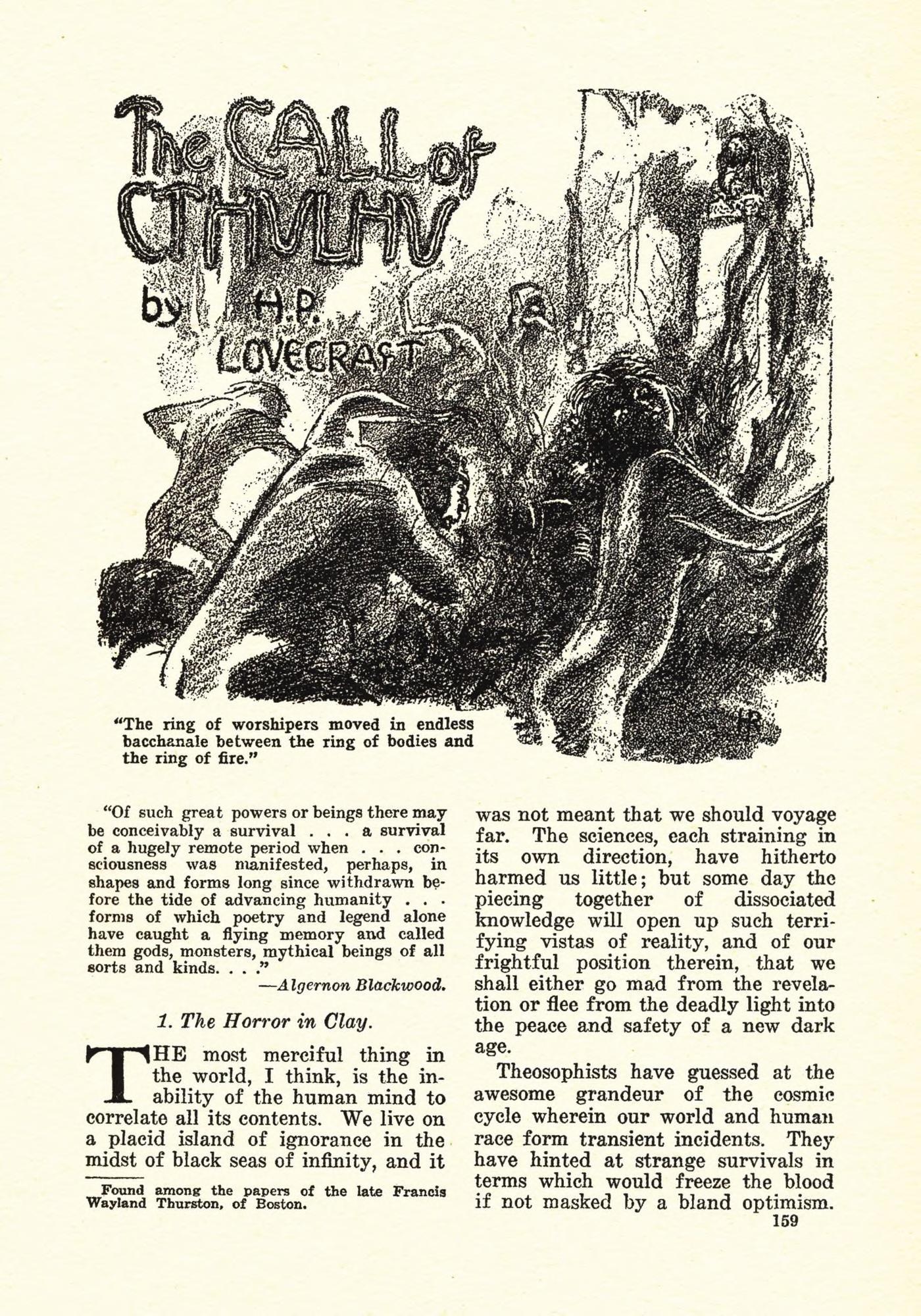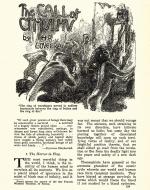Created by Emmett Gill on Tue, 04/16/2024 - 16:15
Description:
Horror literature has been a part of the American authorship for centuries. Traditionally, these works relied on long-established conventions from familiar religious or mythical backgrounds, such as ghosts and vampires (Kneale 108). Some authors, however, established new ways to draw on their readers’ fears and become pioneers in the genre; one such author was the father of cosmic horror, Howard Philips Lovecraft. Lovecraft’s own life story was fairly tragic, being born to a quickly declining wealth in Providence, Rhode Island. He received an incomplete education as a result of his inability to stay healthy. His purebred New England heritage and limited understandings of concepts such as science and mythology would inform his own sense of fear and the development of his own “Cthulhu Mythos”, named for one of Lovecraft’s most infamous works, The Call of Cthulhu.
Lovecraft’s works are infamous for their depictions of the fears that arise from the unknown, and our lack of understanding regarding how the world around us may work. Lovecraft himself puts it best; “We live on a placid island of ignorance in the midst of black seas of infinity, and it was not meant that we should voyage far.” This line is a preface to the events of the story, and establishes the oddity that is the shared dreams amongst the people of Boston about the rise of a maddening creature. Very little is known about the entity, and what people have been able to experience of it has driven them to madness. Lovecraft was quite talented at using locations to unnerve his audience, and had a certain knack for setting stories in “’empty places’ familiar from other fantastic fictions”, and his ability to take realistic places such as his interpretation of Boston and make them uncanny with elements “’from beyond’” was a skill that future writers would admire and pick up on (Kneale 112).
Further research into the dream incident eventually led to the discovery of a cult worshipping entities known as the Old Ones, and eventually culminating with a brief appearance from the titular horror itself. Horrors such as Cthulhu are terrifying to readers because of just how little we know about them, which Lovecraft skillfully portrays:
The Thing can not be described—there is no language for such abysms of shrieking and immemorial lunacy, such eldritch contradictions of all matter, force, and cosmic order. A mountain walked or stumbled. God! What wonder that across the earth a great architect went mad, and poor Wilcox raved with fever in that telepathic instant? The Thing of the idols, the green, sticky spawn of the stars, had awaked to claim his own. The stars were right again, and what an age-old cult had failed to do by design, a band of innocent sailors had done by accident. (The Call of Cthulhu)
Overall, Lovecraft’s ability to strike fear through the unexplainable and unnerve through his locations was something rarely seen at the time, and helped further establish and flesh out the landscape of horror writings.
Works Cited
Kneale, James. “From beyond: H. P. Lovecraft and the Place of Horror.” Cultural Geographies, vol. 13, no. 1, 2006, pp. 106–26. JSTOR, http://www.jstor.org/stable/44251076. Accessed 3 April 2024.
Lovecraft, H.P. The Call of Cthulhu. Project Gutenberg, 10 June 2022, https://www.gutenberg.org/cache/epub/68283/pg68283-images.html.
Rankin, Hugh. Title page of H.P. Lovecraft’s “The Call of Cthulhu” as it appeared in Weird Tales, February 1928. Wikipedia, https://upload.wikimedia.org/wikipedia/commons/b/b1/Weirdtales-1928-02-thecallofcthulhu.jpg. Accessed 15 April 2024.
Copyright:
Associated Place(s)
Part of Group:
Featured in Exhibit:
Artist:
- Hugh Rankin


